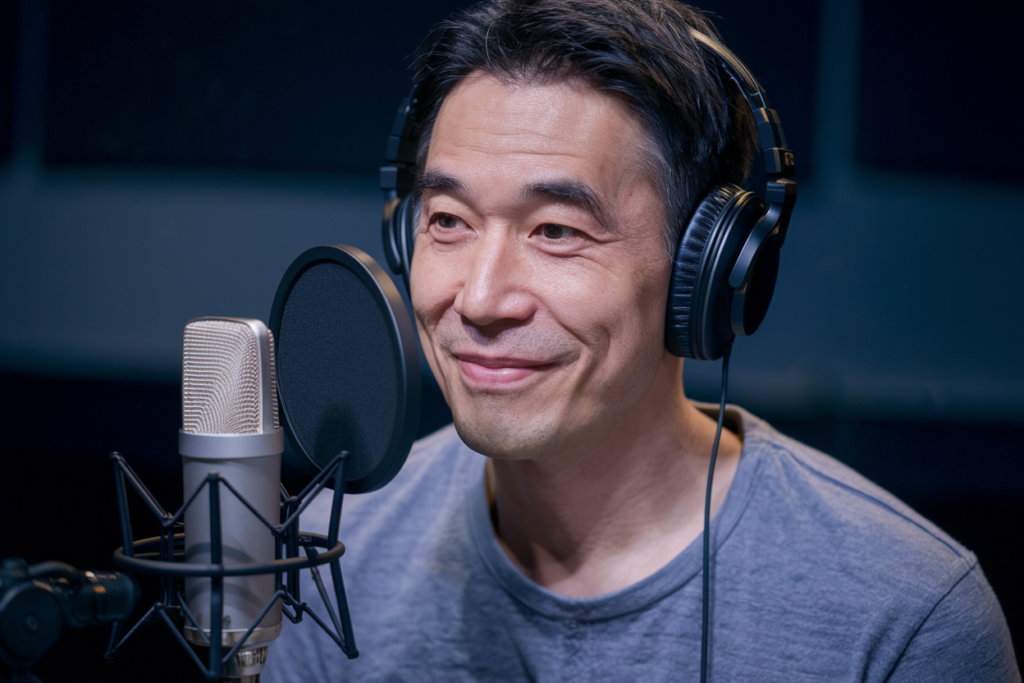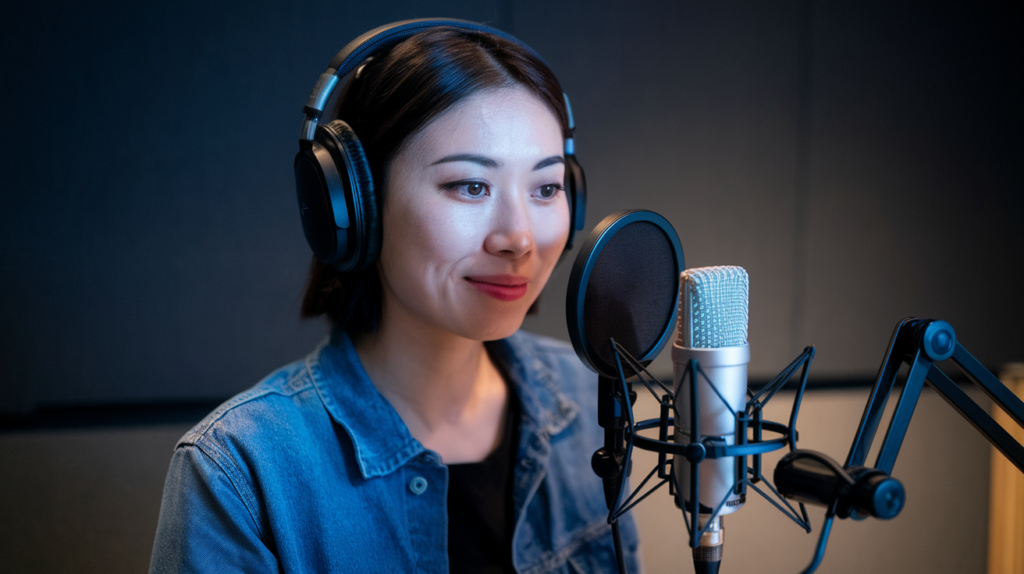Key Takeaways
- Cultural Understanding is Key: Effective video localization for Japan requires a deep grasp of cultural nuances, values, and preferences to foster trust and engagement.
- Language Nuances Matter: Utilizing native speakers for voiceovers and translations ensures authenticity and aligns with local expressions, enhancing relatability.
- Visual Adaptation is Essential: Adapting visuals, colors, and symbols to match Japanese aesthetics prevents misinterpretations and strengthens audience connection.
- Quality Voice Talent Enhances Impact: Selecting appropriate voice actors who resonate with the target demographic amplifies emotional impact and credibility in messaging.
- Utilize Advanced Tools: Leverage software solutions like Adobe Premiere Pro for editing and AI tools for transcription to streamline the localization process while maintaining quality.
- Be Aware of Legal Considerations: Understanding copyright laws and advertising standards in Japan is crucial to avoid legal issues during video content production.
Have you ever wondered why some video content just doesn’t resonate in Japan? Localizing video content for Japan isn’t just about translating words; it’s about connecting with a culture steeped in unique customs and preferences. If you want your message to hit home, understanding these nuances is crucial.
Understanding Video Localization
Video localization involves much more than translating dialogue. It requires adapting the entire content to resonate with Japanese audiences, considering their culture and preferences. The process includes adjusting visuals, graphics, and audio elements for a seamless experience.
When working on video localization for Japan, consider the following key aspects:
- Cultural Relevance: Ensure that themes and references align with Japanese values. What works in one culture might not translate effectively in another.
- Language Nuances: Utilize native speakers or voice talent familiar with local dialects. This ensures authenticity and relatability in your messaging.
- Voiceovers: The choice of voiceover artists significantly impacts audience perception. Selecting a voice artist who embodies your brand message can enhance emotional connection.
- Audio Elements: Pay attention to sound design that matches cultural expectations. Music, sound effects, and tone of voice should reflect local tastes.
Focusing on these components will enhance your video’s impact in Japan. Engaging native voice actors helps convey messages authentically while fostering trust with viewers. Understanding regional variations also plays a crucial role; different areas may respond better to distinct styles or tones.
Localization isn’t just about language; it’s about crafting an experience tailored specifically for the Japanese market. By prioritizing cultural understanding and quality execution, you set the stage for effective communication that resonates deeply with your audience.
Importance of Localizing Video Content for Japan
Localizing video content for Japan is crucial in creating a meaningful connection with the audience. It’s not just about translating words; it’s about embracing cultural nuances and preferences that resonate.
Cultural Nuances
Cultural understanding plays a significant role in localization. Japanese audiences appreciate subtleties, so recognizing customs and traditions is essential. For example, humor might differ significantly from Western standards. Adapting your content to reflect local values fosters trust and engagement.
Visuals also matter greatly in Japan. Certain colors or symbols can hold different meanings, influencing how your message is received. Engaging local experts ensures you navigate these cultural intricacies effectively.
Language Considerations
Language considerations go beyond basic translation into Japanese. It’s vital to capture the essence of what you’re communicating while using expressions familiar to native speakers. Voiceover talent skilled in this area can bring authenticity to your project.
Choosing the right voice actor enhances emotional impact as well. The tone, cadence, and style should align with the target audience’s expectations—an upbeat energy for younger viewers versus a more refined approach for corporate settings.
By prioritizing these elements during localization, you create a richer experience that resonates deeply with Japanese audiences while effectively delivering your message.
Key Steps in Localizing Video Content
Localizing video content for Japan involves specific steps to ensure it resonates with the audience. It requires a thoughtful approach that includes translation and adaptation of various elements.
Translation Best Practices
Effective translation goes beyond simply converting words from one language to another. Focus on capturing the essence of your message while considering local expressions and idioms. Engage professional translators who understand the cultural context, ensuring they can convey nuances that might otherwise be lost. Always consider using native speakers for this task; their insights into language subtleties can significantly enhance the final product.
Adapting Visuals and Graphics
Visual elements play a crucial role in how your content is perceived in Japan. Certain colors, symbols, or imagery may carry different meanings than intended, so it’s essential to adapt these aspects accordingly. Collaborate with local experts who understand cultural significance and preferences when selecting visuals and graphics. This step helps avoid misinterpretations and ensures your visuals align with Japanese aesthetics, thereby fostering a deeper connection with your audience.
Engaging native voice actors adds another layer of authenticity to your video localization efforts. Their familiarity with regional dialects and emotional delivery will enhance viewer engagement while ensuring that humor or subtleties resonate correctly within the cultural context. Choose voice talent whose style complements the tone of your video, as this choice not only impacts emotional response but also strengthens overall credibility in the market.
By focusing on these key steps—careful translation practices and thoughtful visual adaptations—you’ll create localized content that truly connects with Japanese audiences.
Tools and Technologies
Localizing video content for Japan requires specific tools and technologies that streamline the process and enhance quality. These resources make it easier to adapt your message effectively while ensuring cultural relevance.
Software Solutions
Numerous software solutions can facilitate video localization. Programs like Adobe Premiere Pro and Final Cut Pro allow you to edit videos seamlessly, incorporating localized graphics or subtitles. Subtitle editing software such as Aegisub or Subtitle Edit enables precise timing adjustments for subtitles, ensuring they align perfectly with the visuals. For audio, digital audio workstations (DAWs) like Audacity or Pro Tools provide efficient platforms for mixing voiceovers with background music and sound effects. Using these tools ensures your content maintains a professional standard while resonating with Japanese audiences.
AI and Automation
AI-powered tools are revolutionizing the localization landscape by automating various tasks. Speech recognition technology can transcribe spoken content quickly, saving time during the translation phase. Automated translation services offer instant text translations; however, it’s crucial to review them for accuracy and cultural appropriateness since nuance matters immensely in Japanese communication. Additionally, AI-driven voice synthesis technology creates synthetic voiceovers that mimic natural speech patterns but may lack emotional depth compared to human voice actors. While these technologies can expedite processes, relying on skilled voice talent often delivers a more authentic connection with viewers.
By leveraging these tools and technologies effectively, you can create localized video content that resonates deeply within Japan’s unique cultural context.
Challenges in the Localization Process
Localizing video content for Japan presents several challenges that require careful consideration to achieve success. Understanding these obstacles helps you navigate the intricacies of the Japanese market effectively.
Common Pitfalls
Many common pitfalls arise during the localization process. One major issue is underestimating cultural differences, which can lead to misinterpretations. For example, humor that resonates with Western audiences might fall flat or even offend in Japan. Additionally, neglecting to engage local voice actors can diminish authenticity; a native voice actor brings an emotional connection that a non-native speaker often cannot replicate.
Another pitfall involves overlooking language nuances and idiomatic expressions that are vital for conveying your message accurately. Simple translations may miss subtle meanings integral to Japanese culture, ultimately leading to confusion or disengagement among viewers. Lastly, failing to adapt visuals and graphics can result in misunderstandings or negative perceptions due to differing cultural symbolism and aesthetics.
Legal and Regulatory Considerations
Legal and regulatory issues also pose significant challenges in the localization process. Japan has strict guidelines regarding copyright, especially concerning music and images used in videos. Ensuring all elements comply with regulations prevents legal complications down the line.
Moreover, understanding advertising standards is crucial if your content includes promotional material. Certain claims or depictions may not align with local laws, risking penalties or damage to your brand’s reputation.
Engaging professionals familiar with these legal aspects helps mitigate risks associated with localization efforts while ensuring compliance across all facets of your video content production.
Conclusion
Successfully localizing video content for Japan requires a deep understanding of the cultural landscape. By embracing the nuances of language and visual elements you can create authentic connections with your audience. Engaging native voice actors and adapting graphics to align with local aesthetics are essential steps in this process.
Utilizing the right tools and technologies can streamline your efforts but remember that human touch often makes all the difference. Avoiding common pitfalls like neglecting cultural differences ensures that your content resonates effectively. Prioritizing quality execution and cultural relevance not only enhances viewer engagement but also fosters trust within this unique market. This tailored approach will ultimately elevate your video content’s impact in Japan, making it memorable and effective.
Frequently Asked Questions
Why is video localization important for Japan?
Video localization is crucial for Japan because it goes beyond translation. It involves adapting content to align with Japan’s unique culture, customs, and preferences. This ensures that the message resonates with Japanese audiences, fostering engagement and trust.
What are key aspects of video localization?
Key aspects include cultural relevance, language nuances, and effective voiceovers. It’s essential to adapt visuals and audio elements while using expressions familiar to native speakers to create a seamless experience tailored for Japanese viewers.
How can I ensure cultural understanding in my content?
To ensure cultural understanding, engage local experts who can provide insights into Japanese values and humor. Adapting your content’s subtleties will help you connect better with the audience and avoid potential misunderstandings.
What role do voice actors play in localization?
Voice actors are vital in enhancing emotional impact. Their tone and delivery should match the expectations of the target audience. Engaging native voice talent ensures authenticity and strengthens the connection with viewers.
Which tools are best for video localization?
Effective tools include Adobe Premiere Pro for editing, Aegisub for subtitle timing, and Audacity or Pro Tools for sound mixing. These technologies facilitate smooth integration of localized graphics, subtitles, and voiceovers.
Can AI assist in video localization?
Yes, AI can expedite transcription processes through speech recognition technology and offer automated translations. However, it’s essential to review these outputs for accuracy and cultural appropriateness since human insight often yields better results.
What challenges might arise during localization?
Common challenges include underestimating cultural differences or neglecting local language nuances. Additionally, overlooking legal considerations like copyright guidelines may lead to compliance issues that could hinder successful localization efforts.







